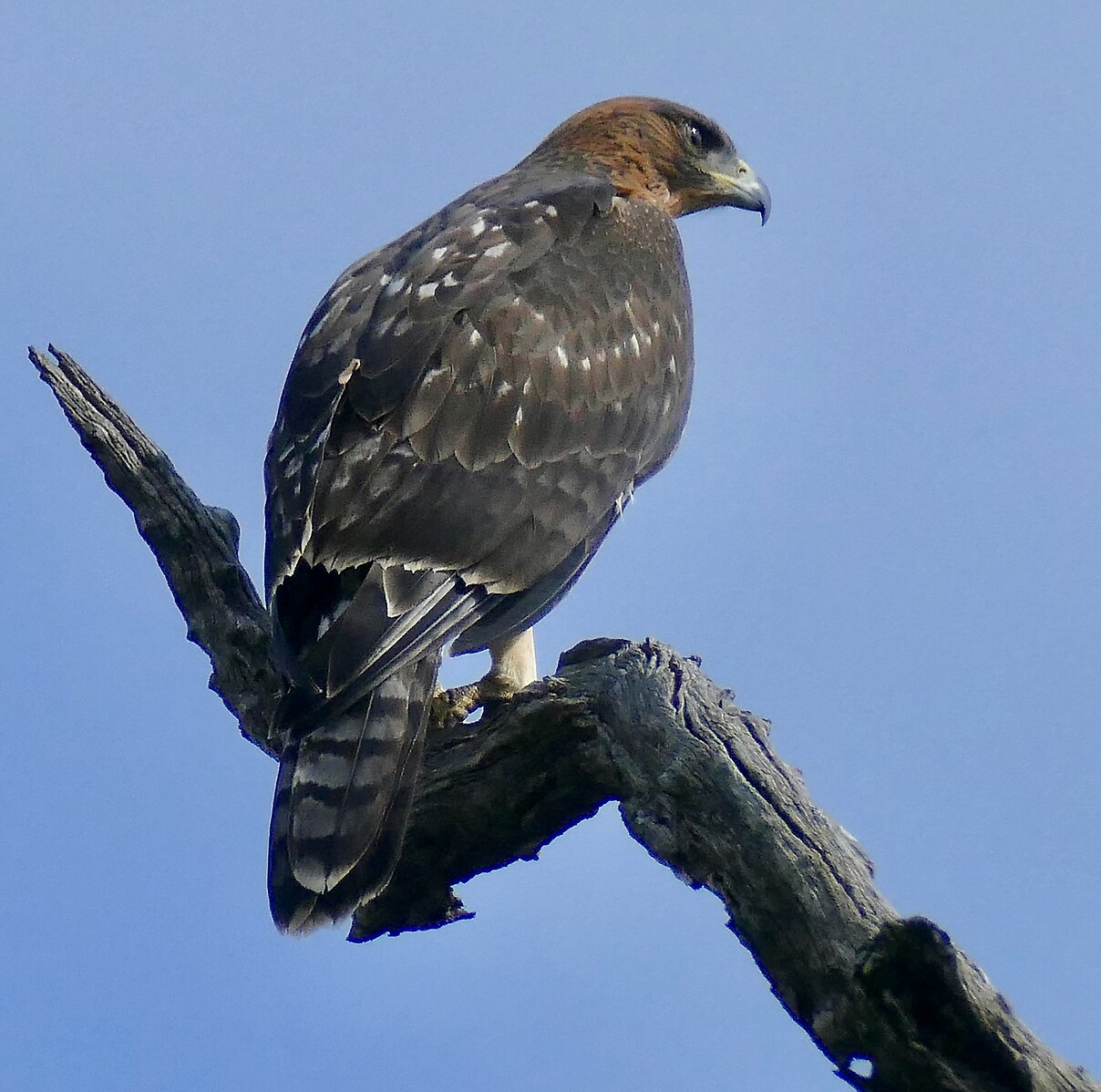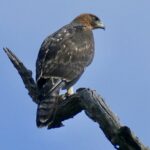African hawk eagles, scientifically known as Aquila spilogaster, do not have teeth. Like all birds, they have beaks which they use to tear and eat their food. These large birds of prey are part of the Accipitriforme Order and Accipitridae Family, and they primarily feed on mammals and birds.
The Anatomy of African Hawk Eagles
African hawk eagles are known for their powerful hunting abilities, with strong legs and large talons. They have a distinctive pied appearance, with slate black-grey coloration above and whitish coloration below. Juveniles, on the other hand, are moderately dark brown above with some pale edging, a slightly black-streaked head, and a more clearly barred tail than adult hawk-eagles.
In flight, the African hawk-eagle appears as a mid-sized raptor with a rather small but well-protruding head, a longish tail, and wings that are neither particularly long nor broad.
Feeding Habits of African Hawk Eagles
 Image source: African Hawk-Eagle by Bernard DUPONT
Image source: African Hawk-Eagle by Bernard DUPONT
As mentioned earlier, African hawk eagles primarily feed on mammals and birds. They are known to be skilled hunters, using their sharp beaks and powerful talons to capture and tear apart their prey. Their diet can include a variety of small to medium-sized animals, such as:
- Hares
- Rabbits
- Squirrels
- Small antelopes
- Birds (such as doves, pigeons, and small waterfowl)
Despite their lack of teeth, African hawk eagles are able to efficiently tear and consume their prey using their strong beaks and talons.
Habitat and Distribution of African Hawk Eagles
African hawk eagles are found across much of sub-Saharan Africa, with a range that includes eastern Eritrea and Ethiopia, southern Ethiopia, West Africa, central and East Africa, and southern Africa. They prefer habitats such as:
- Woodlands
- Savannas
- Mountainous areas
- Forested regions
These birds are known to be adaptable and can thrive in a variety of environments, as long as they have access to suitable prey and nesting sites.
Conservation Status of African Hawk Eagles
The African hawk eagle is classified as a Least Concern species by the International Union for Conservation of Nature (IUCN). However, like many other birds of prey, they face various threats, including:
- Habitat loss and degradation
- Persecution by humans
- Poisoning
- Electrocution from power lines
Conservation efforts, such as habitat protection and awareness campaigns, are crucial to ensure the long-term survival of these magnificent birds.
Interesting Facts about African Hawk Eagles
- African hawk eagles are known for their impressive aerial displays, which can include spectacular dives, loops, and rolls.
- These birds are monogamous and form long-term pair bonds, often returning to the same nesting site year after year.
- The African hawk eagle’s nest is a large, bulky structure made of sticks, twigs, and other natural materials, often built high up in trees or on cliff ledges.
- Females typically lay 1-2 eggs, which both parents take turns incubating for around 42-45 days.
- Once the chicks hatch, both parents actively participate in feeding and caring for the young, which remain dependent on their parents for several months after fledging.
Conclusion
In conclusion, African hawk eagles, despite being powerful birds of prey, do not have teeth. Instead, they use their strong beaks and talons to capture, tear, and consume their prey. These magnificent birds play a crucial role in the ecosystems they inhabit, and their conservation is essential to maintain the balance of the natural world.


